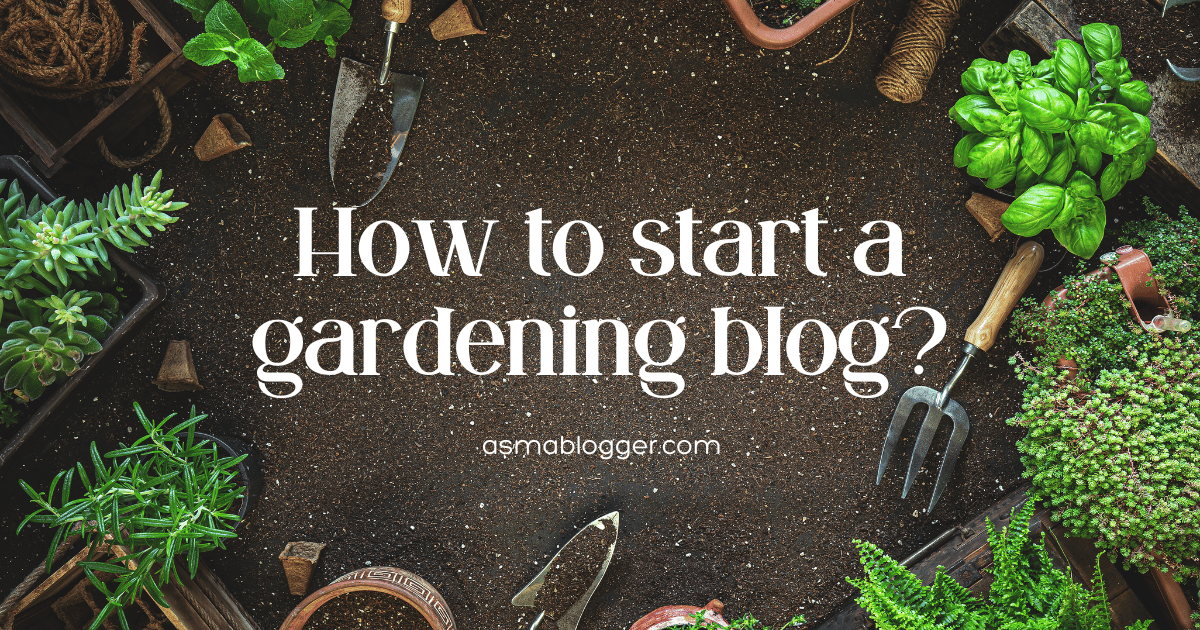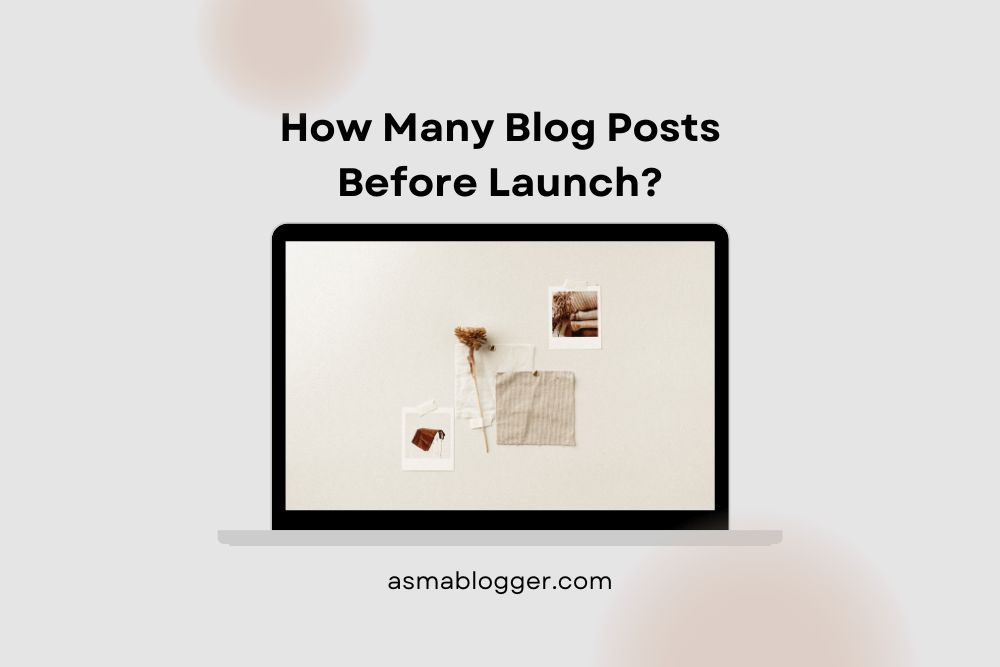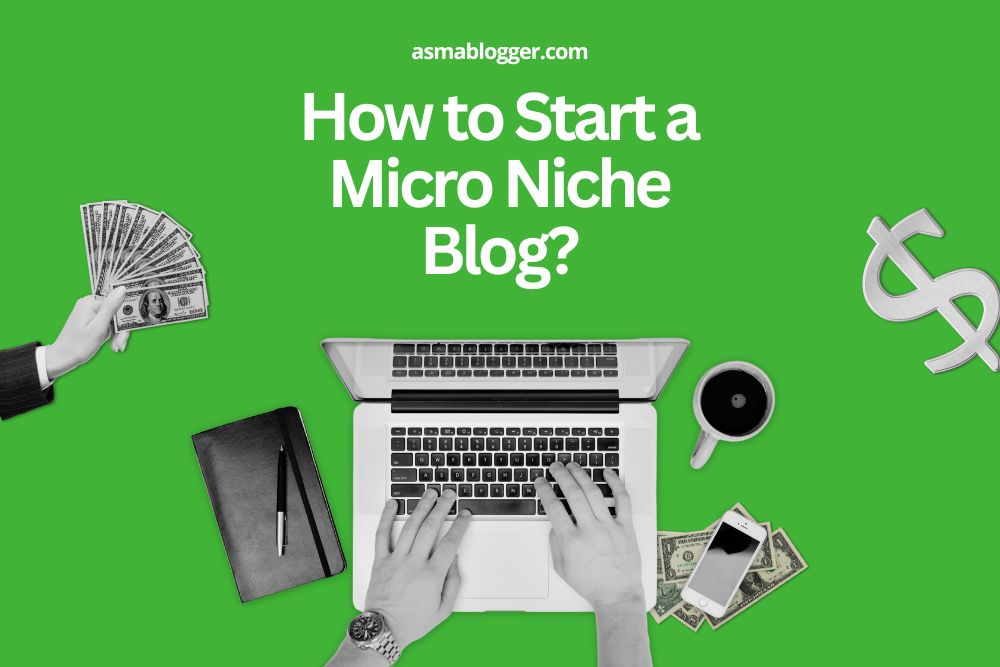Did you know that gardening is a $48 billion industry in the U.S. alone? And guess what—blogging about your green thumb could be your ticket to a slice of that pie! Whether you’re nurturing a full-blown garden or just a few potted plants, starting a gardening blog isn’t just a hobby—it’s a way to share your passion *and* make money doing it. If you’re wondering how to start a gardening blog, you’re in the right place! In this guide, I’ll walk you through every step to turn your love for gardening into a thriving blog. Ready to dig in? Let’s get started!
Table of Contents
ToggleAre gardening blogs profitable?
Well, the short answer is yes, but like with most things, it depends. I’ve managed a fair share of DIY blogs, and while I’m not a hardcore gardener myself, I’ve seen how a well-tended blog (pun intended) can flourish into something quite lucrative.
Gardening is a broad field, but if you can drill down into a specific sub-niche—like urban gardening, organic gardening, or even succulent care—you’re more likely to attract a dedicated audience. And a passionate audience equals better monetization opportunities. Speaking of which, there are several ways to monetize a gardening blog:
- Affiliate links: Promote gardening tools, seeds, or even gardening books. The commissions can add up, especially if you’re promoting high-ticket items like greenhouse kits.
- Ads: Once you’ve got a decent amount of traffic, putting ads on your blog can bring in a steady stream of passive income. It’s not glamorous, but it works.
- Brand partnerships: This is where things can get really interesting. Brands are always looking for authentic voices to promote their products. If your blog gains traction, you might find yourself with some lucrative sponsorship deals.

How much do gardening blogs earn per month?
In terms of actual numbers, productiveblogging suggests there’s a strong correlation between pageviews and income. The more eyeballs on your content, the more money you’re likely to make. Freelance gardening writers, for instance, can earn anywhere from $150 to $600 per article, depending on the length and depth. And bloggers can rake in additional cash through ads, sponsored content, and even paid webinars. Here’s the thing:
- Affiliate Earnings: $500 to $2,000 per month (depends on the trust and relevance of the products)
- Ad Revenue: A few hundred bucks, up to $1,000+ with high traffic
- Sponsorships/Brand Deals: $1,000 to $5,000 per post (this is where the big bucks are)
- Other Income Streams: Things like selling eBooks, online courses, or even offering consulting services can add to your monthly income
So, it really comes down to your monetization strategies. If you get it right from the start, you can start earning a lot sooner compared to relying on poor strategies. It’s crucial to focus on this from day one so you’re publishing the right content that’s set up for success. And if you ever need more expert help with this, feel free to reach out to me.
let’s discuss how to start a gardening blog and make money!
Step 1 (How to start a gardening blog): Choose the Right Gardening Niche for Your Blog
Alright, let’s kick things off with probably the most crucial step in how to start your gardening blog—choosing the right niche. It might sound like just a fancy term, but trust me, getting this right is a game-changer.
a. Identify Your Passion
First things first, think about what truly gets you excited about gardening. Do you love the idea of growing your own food? Or maybe the sight of vibrant flowers makes your heart skip a beat? Whatever it is, your blog should reflect what you’re passionate about. Why? Because if you’re not jazzed about the content you’re creating, chances are, your readers won’t be either. And believe me, there’s nothing worse than trying to force yourself to write about something you don’t really care about.
b. Research Market Demand
Now, just because you love a certain type of gardening doesn’t necessarily mean there’s a huge audience for it. This is where a bit of market research comes in handy. A tool like Google Trends is your best friend here. It’s super simple—just type in your potential niche, like “succulent gardening” or “urban gardening,” and see how popular it is. If the graph’s trending upward, you’re in business. If not, maybe consider tweaking your focus.
c. Analyze Competitors
Next up, let’s talk about competition. You don’t want to dive into a niche that’s already saturated with big-name bloggers unless you’ve got a unique spin. Spend some time browsing other gardening blogs. What topics are they covering? What’s their audience engagement like? Look for gaps—maybe they’re not focusing on eco-friendly gardening methods, or they haven’t touched much on container gardening. These gaps are your opportunities to shine.
d. Define Your Target Audience
Finally, who are you actually writing for? Are your readers beginners just starting out with a tiny backyard? Or maybe they’re seasoned gardeners looking for advanced tips? You want to be as specific as possible here because knowing exactly who you’re writing for makes your content more focused and relatable. And don’t be afraid to get detailed—think about their age, location, interests, and even what challenges they might face.

Step 2 (How to start a gardening blog): Set Up Your Gardening Blog: Essential Steps
So, you’ve decided to start a gardening blog—awesome choice! Now, it’s time to get things set up. This step is all about laying the groundwork for your blog. Trust me, setting this upright can save you a ton of headaches down the line.
a. Select a Domain Name
- Keep It Relevant: Your domain name should immediately tell people what your blog is about. Think about names like “UrbanGardener” or “BackyardBloom”—something that screams gardening without being too specific.
- Make It Memorable: Avoid complicated words or anything too long. You want something that rolls off the tongue and sticks in the mind. If it’s hard to spell, people might just give up trying to find your site.
- Check Availability: Before you get too attached, make sure the domain is available. I’ve had my heart set on a name, only to find it’s taken—it’s a bummer. But don’t worry, there are tons of variations you can try.
- Room to Grow: Don’t box yourself in. If you name your blog “TomatoTips,” what happens when you want to write about roses? Leave yourself some room to expand.
b. Choose the Best Blogging Platform
- WordPress: My go-to. It’s free (except for hosting) and insanely flexible. You can customize just about everything, which is perfect as your blog grows. Plus, there’s a huge community for support.
- Wix: Super user-friendly, especially if you’re not tech-savvy. It’s drag-and-drop, so you don’t need to know a lick of code. But, it’s a bit more limiting if you plan to scale up later.
- Squarespace: Another good option if you want something that looks sleek right out of the box. It’s a bit pricier, but they take care of a lot for you—hosting, security, the works.
c. Find Reliable Web Hosting
- Look for Speed and Uptime: You don’t want your blog to be slow or down all the time. Hosting services like Bluehost or Hostinger are solid choices—they’re fast and have good uptime. I have used both.
- Customer Support: Trust me, at some point, you’ll need help. Make sure your host has 24/7 customer support. You don’t want to be stuck waiting for hours when something goes wrong.
- Scalability: As your blog grows, you’ll need more resources. Pick a hosting provider that suits you, offering plans that can scale as your audience expands.
d. Design Your Blog
- Pick a Theme: WordPress has a gazillion themes, both free and paid. Choose one that matches your vibe—something clean and easy to navigate. Gardening is about nature, so go for something green, earthy, or nature-inspired.
- Keep It Simple: Don’t overload your blog with too many features. A cluttered site can turn readers away. Focus on readability and easy navigation.
- Mobile-Friendly: Make sure your theme looks good on mobile. A lot of folks will be reading your blog on their phones while out in the garden.
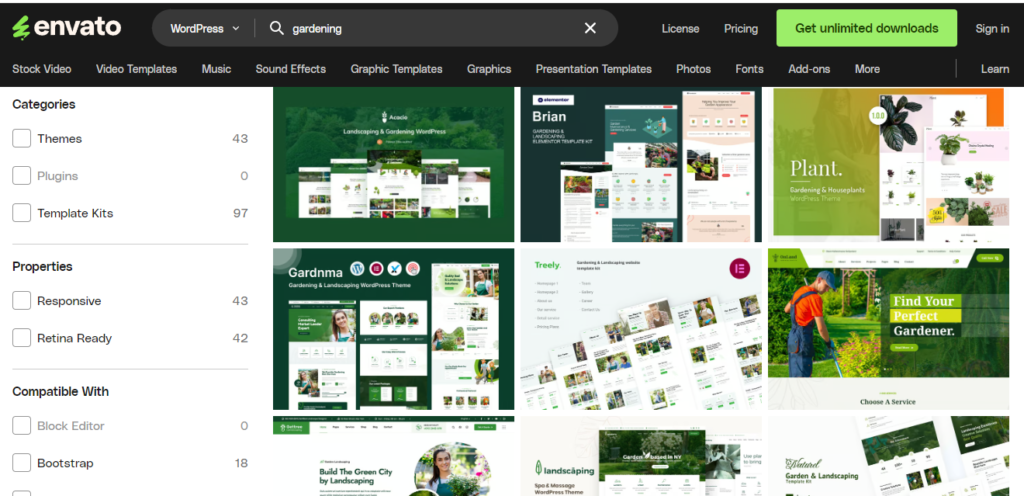
e. Set Up Essential Plugins
- SEO Plugins: Yoast SEO is a must (its’ free version is enough). It helps you optimize your posts so they rank better on Google.
- Security Plugins: Wordfence is a solid choice. It keeps the hackers out, so you can sleep easy.
- Performance Plugins: WP Super Cache or W3 Total Cache can speed up your site, which is crucial for keeping readers around.
- Spam Protection: Akismet is great for keeping those annoying spam comments in check.
Step 3 (How to start a gardening blog): Create High-Quality Gardening Content That Engages Readers
Creating valuable content for your gardening blog involves more than just writing; it’s about crafting a strategy for your targeted audience and adheres to best practices. Here’s a step-by-step guide to help you produce high-quality content:
a. Plan Your Content Strategy
- Identify Your Audience: Understand whether your readers are beginners, intermediate gardeners, or experts to meet their specific needs.
- Develop a Content Calendar: Schedule posts to balance evergreen topics (e.g., “How to Start a Garden”) with seasonal content (e.g., “Spring Planting Tips”). This ensures consistent engagement throughout the year.
- Content Types: Include a mix of how-to guides, plant care tips, garden design ideas, and seasonal advice to keep your blog diverse and interesting.
b. Write Your Blog Posts
- Adopt a Conversational Tone: Write as if you’re having a friendly chat with a reader. Avoid jargon unless it’s explained in simple terms.
- Use Clear, Step-by-Step Instructions: Break complex topics into digestible steps. For instance, a post on composting should detail each stage, from gathering materials to using the compost in the garden.
- Provide Context: Explain why certain gardening practices are recommended. For example, detail how proper watering techniques prevent plant diseases.
c. Incorporate SEO Best Practices
- Conduct Keyword Research: Use any accurate keyword research tools like Google Keyword Planner, Ahrefs, Ubbersuggest, or SEMrush to find the best keywords for your posts. Focus on phrases your audience is searching for.
- Optimize On-Page Elements:
- Headings: Use clear, descriptive headings to organize your content.
- Meta Descriptions: Write compelling meta descriptions with target keywords to improve search engine visibility.
- Internal and External Links: Link to other relevant posts on your blog and reputable external sources to provide additional value and improve SEO.
- Include Alt Text for Images: Describe the content of your images to enhance accessibility and SEO.
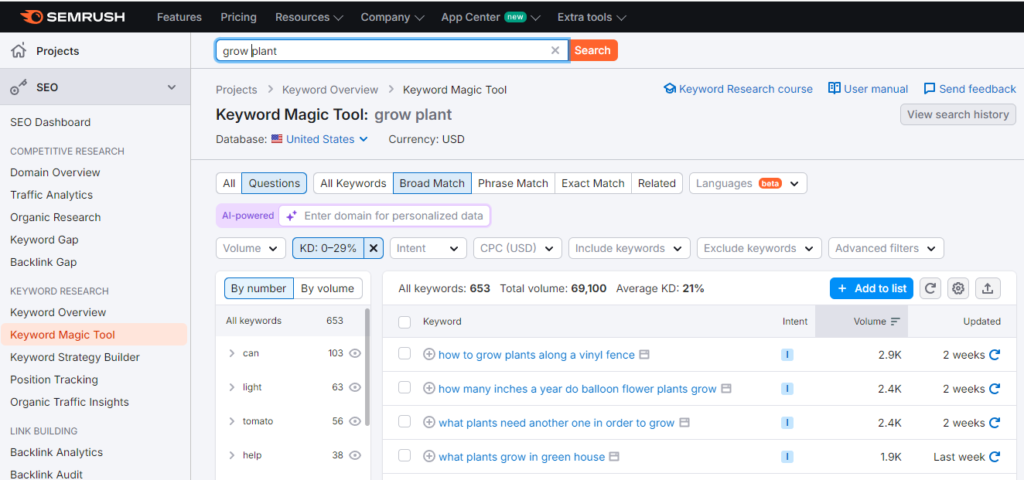
Check out my guide: Content-Centric SEO: A Comprehensive Guide
d. Using High-Quality Images and Videos
- Incorporate Visuals: Use high-resolution images of plants, garden tools, and finished projects. Images should be relevant and enhance the content.
- Create Original Content: If possible, take your own photos and videos to provide a personal touch and avoid generic stock images.
- Add Videos: Consider including instructional videos or garden tours to engage readers visually and provide additional context.
e. Encouraging Reader Interaction
- Engage with Comments: Prompt readers to leave comments with questions or tips and respond to them to build a sense of community.
- Use Interactive Features: Add polls or quizzes to collect feedback and insights from your audience, such as “What’s your biggest gardening challenge?” Ask them to share your posts if they like.
Step 4 (How to start a gardening blog): Promote Your Gardening Blog to Attract Traffic
So, you’ve planted the seeds (pun intended) of your gardening blog, and now it’s time to help it grow by promoting it effectively. Here’s how I like to tackle it:
a. Use Social Media Platforms
Let’s start with the obvious – social media is your best friend when it comes to driving traffic. Each platform has its strengths, so let’s break it down:
- Pinterest: This platform is a goldmine for gardening bloggers. I mean, who doesn’t love scrolling through beautiful garden photos? Create visually stunning pins for each of your blog posts, making sure they’re keyword-rich. Pinterest is less about being social and more about being found, so focus on creating content that is easy to share.
- Instagram: Instagram is where you can really show off your gardening skills. Post regular updates with eye-catching photos of your garden, plants, and even behind-the-scenes moments. Use relevant hashtags like #gardeningtips or #urbanjungle to reach a broader audience. Stories and Reels are great for quick tips or showcasing a day in the garden – people love seeing real-life, imperfect moments too.
- Facebook: Facebook groups are an excellent way to connect with other gardening enthusiasts. Join a few groups and don’t just drop links to your blog. Engage in conversations, answer questions, and offer genuine advice. When you do share your blog posts, they’ll be much more welcomed if you’re already a valued member of the community.

Want to grow your blog without social media? Check my guide: How to Promote Your Blog Without Social Media: Tested Strategies
b. Networking with Other Bloggers
Now, let’s talk about collaboration. Gardening is a community effort, after all, so why not bring that spirit to your blog?
- Guest Posting: Reach out to other gardening bloggers and offer to write a guest post. This isn’t just about getting a backlink; it’s about reaching a new audience that’s already interested in gardening. Be sure to tailor your guest posts to their audience while subtly weaving in your unique perspective.
- Collaboration: Collaborating doesn’t have to be limited to writing. Partner with other bloggers for a giveaway or create a joint series where you each tackle different aspects of a topic. It’s a win-win – you both get exposure, and your readers get a richer experience.
You may also like: How to Write a Collaboration Email That Closes the Deal?
c. Leverage Email Marketing
You might be thinking, “Email? Really?” But trust me, email marketing is still a powerhouse.
- Building an Email List: Start by offering anything valuable to your readers in exchange for email addresses. It could be a free gardening guide, a checklist for seasonal tasks, or even a monthly gardening calendar. The key is to make it something they can’t resist.
- Newsletters: Once you’ve got that list, don’t just send out your latest blog post. Make your newsletters worth opening. Share tips, spotlight a reader’s garden, or include a quick personal story about your gardening adventures. The more personal and valuable your emails are, the more likely they are to click through to your blog.
Check out my guide: What Are the Benefits of Email Communication? My Insights
d. Participating in Gardening Forums and Communities
Let’s not forget the old-school method of community engagement. Forums and online gardening communities are still thriving, and they can be a fantastic way to build your blog’s presence.
- Join the Conversation: Sign up for a few gardening forums and get involved. Don’t just lurk – answer questions, start threads, and share your knowledge. Over time, you’ll become a trusted member of the community, and people will naturally gravitate to your blog.
- Link Strategically: While many forums frown upon blatant self-promotion, there’s usually room to link to your blog when it’s genuinely relevant to the discussion. Just be sure to add value first – the links will follow naturally.
For more insights, read my guide: How to Build a Blog Following? Expert Tips
Step 5 (How to start a gardening blog): Monetize Your Gardening Blog with Proven Strategies
a. Affiliate Marketing for Gardening Products
Finding and promoting gardening-related affiliate products is one of the easiest ways to start making money from your blog. Here’s how you can do it:
- Identify Relevant Products: Focus on products that align with your blog’s content. Whether it’s gardening tools, seeds, or soil, choose items that your readers are likely to buy.
- Join Affiliate Programs: Start with well-known affiliate programs like Amazon Associates or ShareASale. These platforms have a wide range of gardening-related products, making it easy to find items to promote.
- Write Honest Reviews: Share your experiences with the products. Write detailed reviews or how-to guides that naturally incorporate your affiliate links. The more genuine and helpful your content, the more likely your readers will trust your reviews and make a purchase.
b. Sell Digital Products and eBooks
Selling any digital products is a fantastic way to generate passive income. Here are some ideas to get you started:
- Gardening Guides and eBooks: If you’ve got expertise in a specific area of gardening, package that knowledge into a downloadable guide or eBook. Think along the lines of “Beginner’s Guide to Urban Gardening” or “Seasonal Vegetable Planting Schedules.”
- Printables: Consider offering printables like garden planning sheets, plant care trackers, or seasonal checklists. These are easy to create and can be sold repeatedly at no additional cost.
- Easy Digital Downloads: Use platforms like Easy Digital Downloads to set up your digital store. It’s simple to integrate with WordPress, and you can start selling your products within minutes.
c. Offer Online Courses and Workshops
If you’re passionate about teaching, offering online courses or live workshops can be a great way to monetize your blog:
- Identify Your Niche: Focus on a specific topic that your audience struggles with, like organic pest control or container gardening.
- Create Course Content: Develop a structured course with video tutorials, downloadable resources, and quizzes. You can host your course on platforms like Teachable or Thinkific.
- Offer Live Workshops: If you prefer real-time interaction, consider hosting live webinars or workshops. This can be a great way to connect with your audience and provide personalized advice.

d. Run Advertisements
Displaying ads on your blog is one of the more passive ways to earn income. Here’s what you need to know:
- Google AdSense: This is a popular ad network for beginners. It’s easy to set up and can start generating revenue quickly. However, it might not bring in big bucks unless you have substantial traffic.
- Media.net: If you’re looking for an alternative, Media.net is a good option. It offers competitive payouts and high-quality ads, often making it a better fit for niche blogs like gardening.
- Balancing Ads and User Experience: While ads can be profitable, they can also disrupt the user experience. Try to strike a balance by placing ads in less intrusive spots on your blog.
e. Sponsored Content and Brand Partnerships
Partnering with other brands of your niche for sponsored content can be lucrative, but it requires some strategy:
- Build Relationships: Start by reaching out to companies that align with your blog’s mission. Whether it’s a seed company or a tool manufacturer, make sure it’s a brand you genuinely like and use.
- Negotiate Terms: When a brand is interested, negotiate terms that work for both parties. You can also offer to write a sponsored content, review their product, or feature their brand in a social media campaign.
- Maintain Authenticity: Always be honest with your audience. If you’re promoting a product for money, make sure it’s something you believe in. Your readers’ trust is more valuable than any sponsorship deal.
Check out: How to Write a Sponsored Blog Post That Converts?
Step 6 (How to start a gardening blog): Track and Analyze Your Blog’s Performance
Alright, so you’ve set up your blog, you’re pumping out content, and now it’s time to see if all that hard work is paying off. This is where tracking and analyzing your blog’s performance becomes crucial. Trust me, I’ve been there—hitting the “refresh” button on Google Search Console more times than I’d like to admit, waiting to see those numbers climb.
a. Setting Up Google Accounts
First, ensure that Google Analytics and Google Search Console are up and running on your site. It’s straightforward: sign up, obtain your tracking ID, and insert it into your blog’s backend. For WordPress users, there are numerous plugins available to simplify this process. Once configured, Google Analytics will be an invaluable tool for your site’s performance analysis.
Pro tip: Set up goals from the outset. By defining specific objectives such as newsletter sign-ups or product purchases, you’ll be able to track meaningful interactions beyond mere page views.
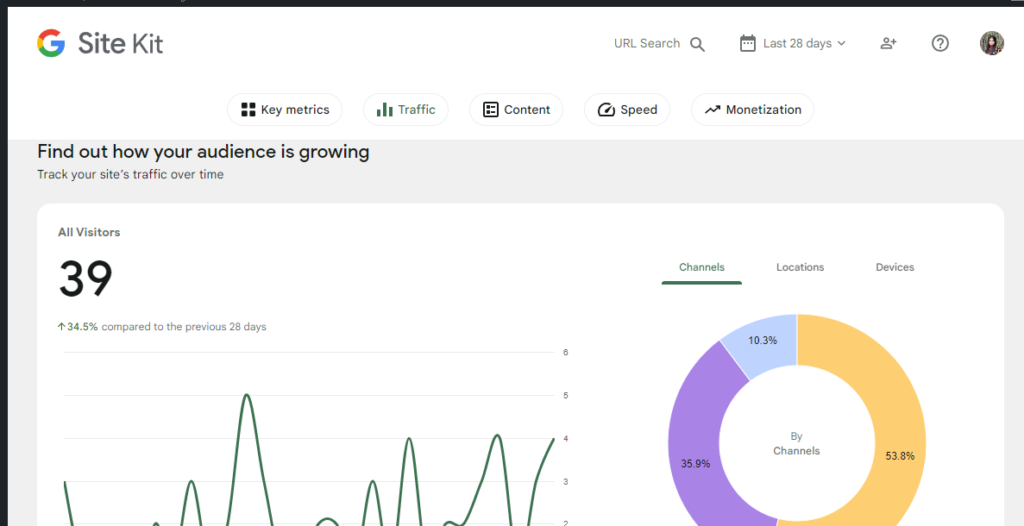
b. Understand Key Metrics
Now, let’s talk about metrics. Not all of them are created equal, and some are more important depending on what you’re trying to achieve. Here’s a quick rundown of what I keep an eye on:
- Page Views: This is like the bread and butter of blog metrics. It tells you how many times your pages are being viewed. But, don’t get too obsessed with this number alone. It’s more about quality over quantity here.
- Bounce Rate: This one can be a bit of a heartbreaker. It shows the percentage of visitors who leave after viewing just one page. High bounce rate? Maybe your content isn’t as engaging as you thought, or your site’s load time is too slow. It’s a signal to dig deeper.
- Time on Page: Are people actually reading your stuff, or are they just skimming? If they’re spending a good amount of time on your pages, it’s a good sign your content is resonating.
- Traffic Sources: This will help you know from where your visitors are coming from—Google search, social media, direct traffic, etc. It’s a key indicator of which marketing channels are working for you.
- Social Shares: If your posts are getting shared around, that’s a solid sign you’ve hit on something people find valuable.
c. Adjust Your Strategy Based on Data
Alright, so you’ve got the data. Now what? It’s time to make some moves based on what you’re seeing.
- Low Time on Page? Maybe your intro isn’t grabbing attention. Try spicing it up with a compelling hook.
- High Bounce Rate? This might be a sign your content isn’t what people expected when they clicked through. Maybe tweak your headlines or meta descriptions to better match the content.
- Traffic Dropping Off? If your organic traffic is dipping, it might be time to revisit your SEO strategy. Maybe do a little keyword research refresh or optimize older posts.
How to start a gardening blog and make money: Conclusion
And there you have it—your roadmap on how to start a gardening blog and turn your gardening passion into a profitable blog! 🌱 From setting up your site to monetizing your content, you’ve got all the tools you need to dig in and start growing your online presence. Remember, every garden blog is unique, so feel free to customize these steps to fit your own style and goals.
Stay mindful of creating high-quality content and engaging with your audience, and don’t hesitate to reach out if you need expert help along the way. Ready to get started? Share your gardening blog tips or experiences in the comments below—I’d love to hear about your journey! Happy blogging!

